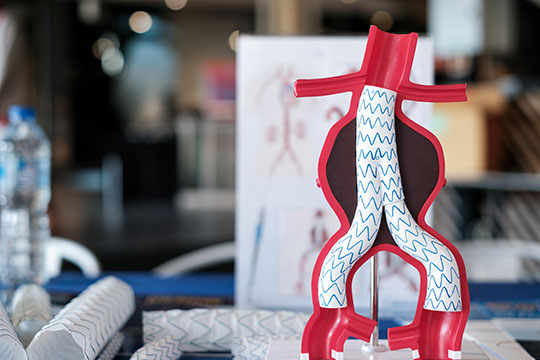Conditions & Diseases
Abdominal Aortic Aneurysm
An abdominal aortic aneurysm is a weakened area in the main blood vessel (aorta) that carries blood away from the heart to the abdomen. Blood flow can cause the weakened area to enlarge and possibly burst.
Signs & symptoms
- Pain in the back
- Pain in the front or side of the abdomen
- A throbbing sensation in the navel/stomach area
- If you experience any of these symptoms, you should seek medical evaluation.
Risk factors
- Gender (Men are often at higher risk)
- Age (over 65)
- History of smoking
- Family history
- High blood pressure
- High cholesterol
Diagnosis
An abdominal aortic aneurysm can be difficult to diagnosis because it typically develops slowly and rarely presents with symptoms. Each abdominal aortic aneurysm has a different rate of growth and some may never rupture. Only about half of patients who seek medical care survive a ruptured abdominal aortic aneurysm.
Treatment
Once an aneurysm has been diagnosed, initial treatment is usually watchful waiting with periodic scans to determine size and growth rate of the aneurysm. When the risk of rupture outweighs the risk of surgery, about 80-90 percent of aneurysms can be repaired with less invasive techniques involving the placement of an endograft or “stent” via a small incision in the groin area. This usually leads to reduced recovery time, pain and risk.


